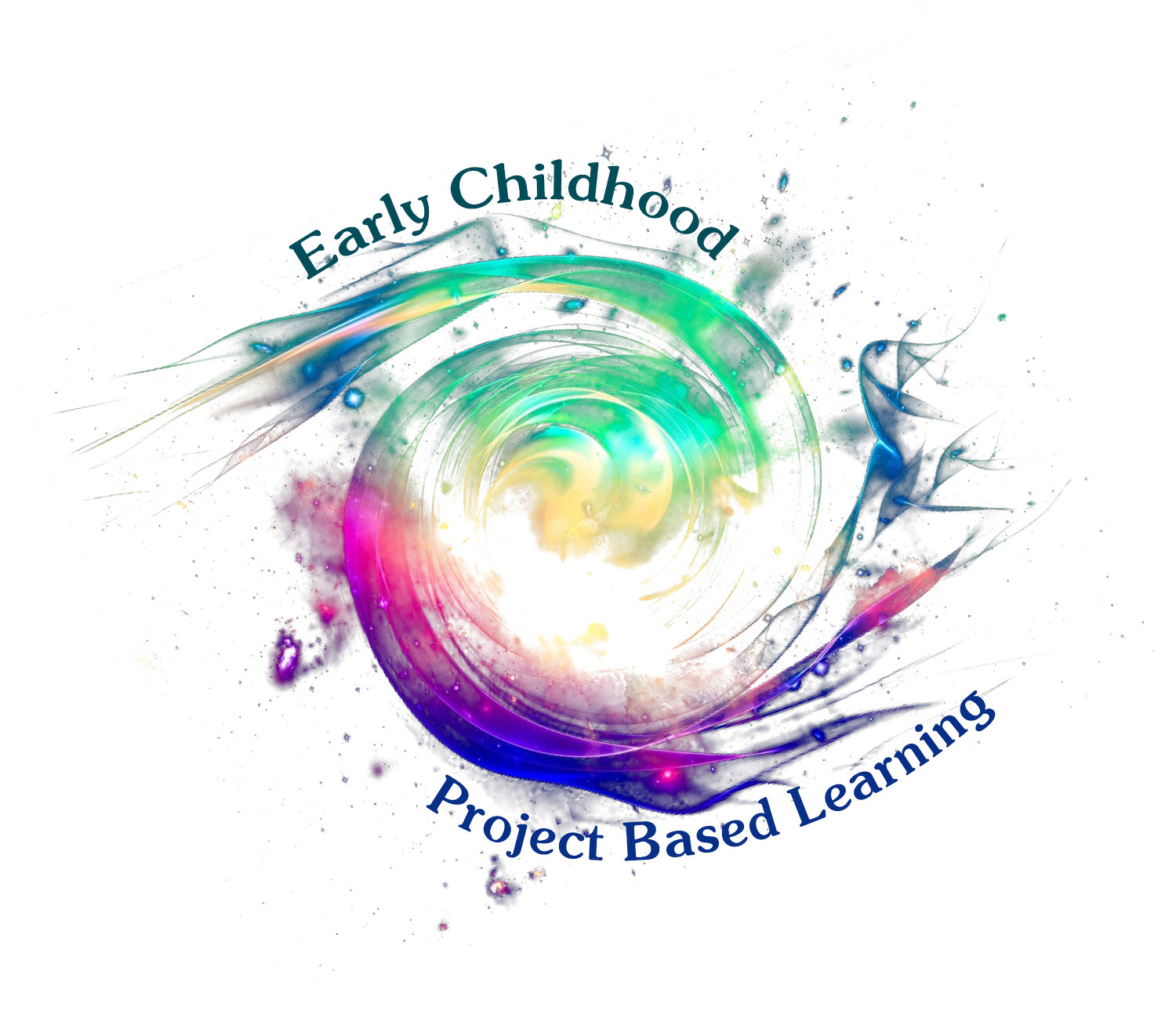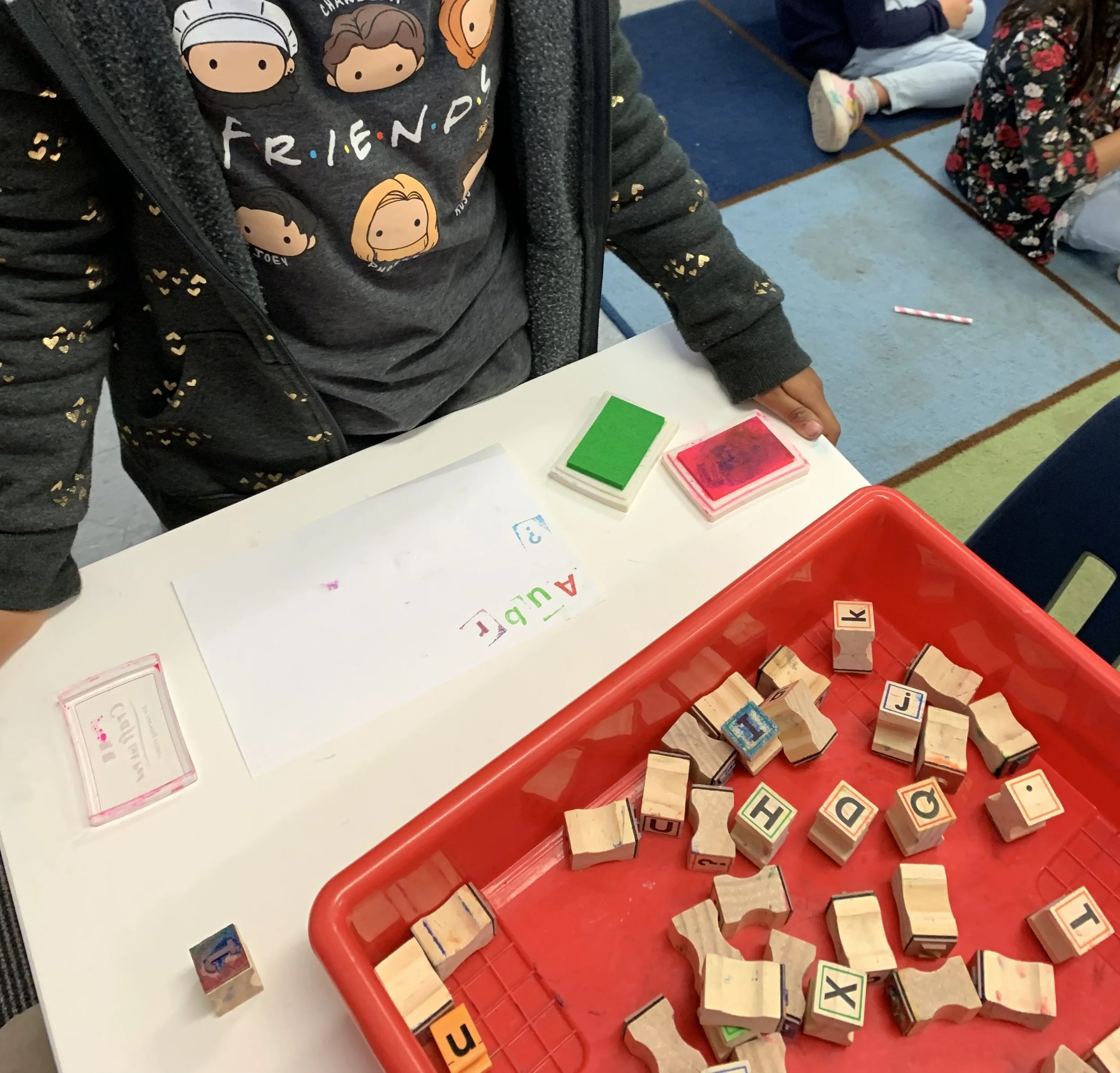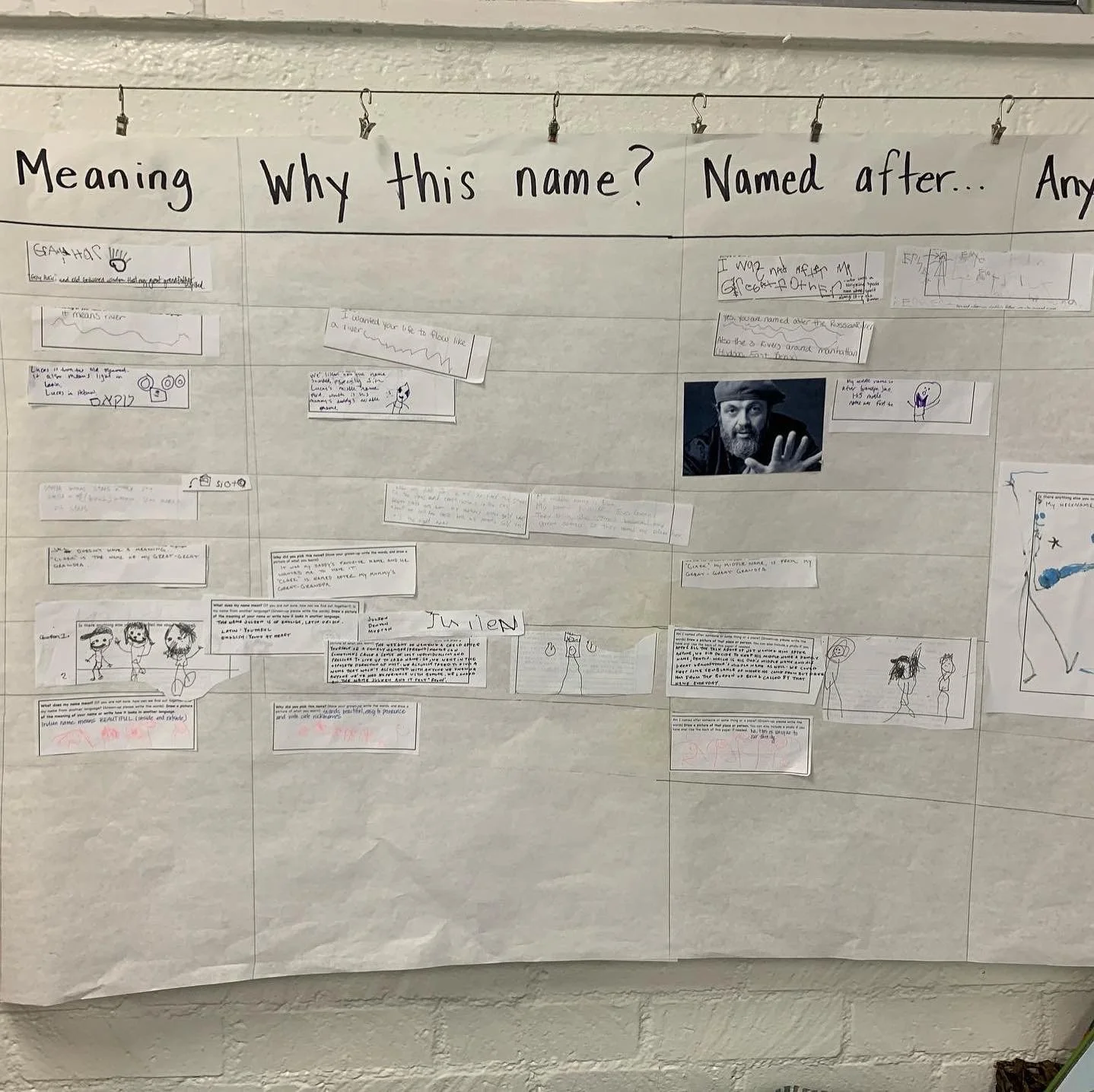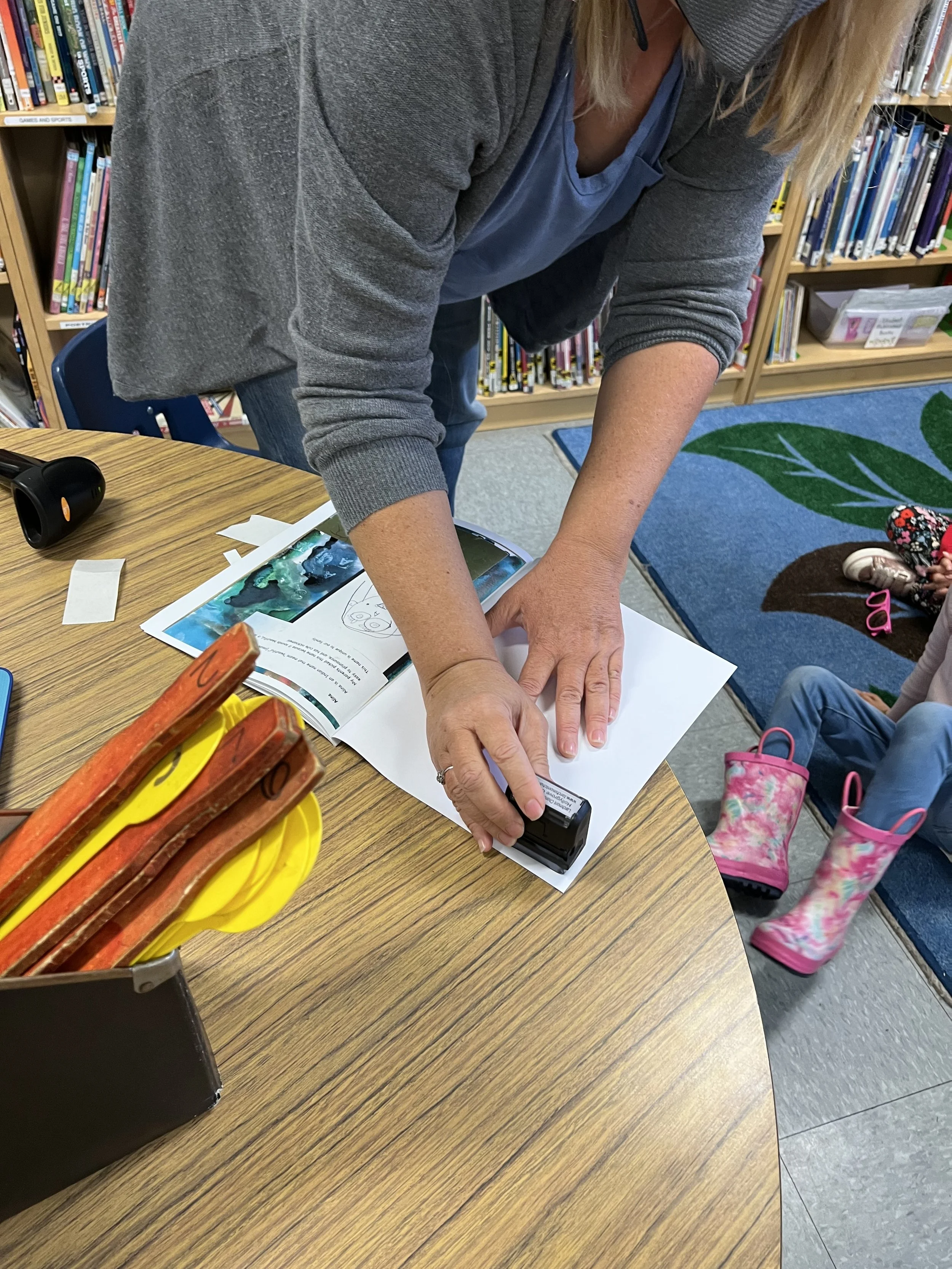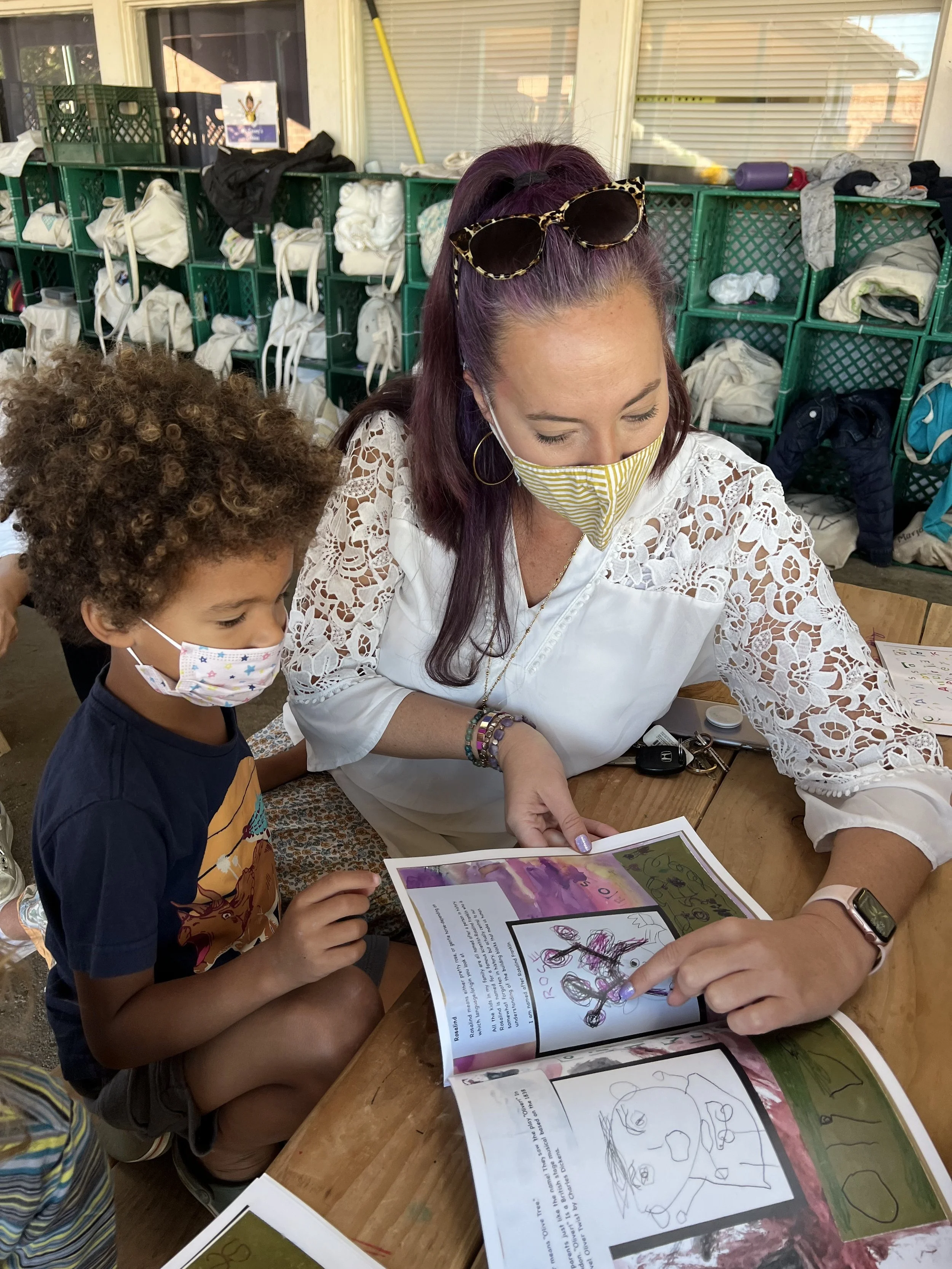All About Our Names: Telling our Name Stories through PBL
I don't know about all of you, but this school year started off quite differently for me in terms of children’s knowledge and skills, their experiences - not to mention the social and emotional development that typically comes from having attended a few years of preschool. During those first few weeks of school as I was observing my 4-year-old students, I realized, and had to acknowledge, that these children had missed out on learning experiences and social interaction unlike any other class I had ever taught. I quickly found I needed to adjust and adapt my curriculum, project ideas, and, honestly, some of my expectations.
Typically I embark on an 8-10 week unit mid-September grounded in learning goals and my students’ interests. Based on what I had observed, I decided that a shorter project might be more successful. I was still in the process of getting to know my students, building our classroom community, and learning what we might be able to do together, given the newness of school for this group of children. Our first project was just one week long. Children created a short virtual tour of our classroom to show parents at Back To School Night since they could not attend in-person. By the end of the project, my students still seemed to be just beginning to know themselves, who they were, and what school is.
Telling Our Name Stories
In early fall, I was mid-way through Dr. Gholdy E. Muhammad’s book Cultivating Genius: An Equity Framework for Culturally and Historically Responsive Literacy when the section “Tell Our Name Stories” sparked an idea for a new PBL unit. Dr. Muhammad writes that “when students write and tell their names stories, they, along with their teachers, begin to learn more about who they are” (p. 76). I wasn’t sure what a project about telling name stories would look like for children who don’t yet identify letters or sounds, don’t read or write yet, who speak only languages other than English, and who are just learning about their own identities, but I was intrigued.
“It is through our names that we first place ourselves in the world. ”
Dr. Muhammad reframes and expands the concept of “literacy” to include essential characteristics beyond the usual skills and knowledge we tend to teach young children (letters, sounds, word decoding). She pushes us to widen the concept of literacy to include focusing on children’s intellect, identity, criticality (the capacity to read, write, and think in ways of understanding power, privilege, social justice, and oppression particularly for populations who have been historically marginalized in the world) and joy. As I kept reading, I felt PBL tapping me on the shoulder (as it often does) whispering, this is possible. Then I read a sentence where Dr. Muhammad quotes Ralph Ellison saying, "It is through our names that we first place ourselves in the world” and I knew I had to do this project. As my kids began this school year, one of my wishes for them was to find themselves in this new world of school, and I was confident an in-depth study of their names might help.
Lucky for me, in the last few years several excellent “Name Identity” picture books have been published. I scoured book lists and resources, searching for ideas and inspiration. When I thought I had a pretty good collection of books and learning goals for the project, we launched our unit.
Diving into our Unit
The driving question I came up with was: How can we make a book that’s all about our names? An authentic and challenging question for sure, one that I believed would lead to deep literacy learning - not just about literacy skills, but developing intellect, criticality, identity and - especially - joy. I am committed to bringing joy into all aspects of young children’s learning, especially now, since this fall is my students’ first real experience of school. I wanted to weave all of these key elements of early literacy together in one PBL unit where children could learn about an authentic and meaningful topic such as their own names.
So for my first full PBL unit of this year, the children learned about the process of writing and illustrating books by making our own book of name stories. The children interviewed their families about their names by asking just three simple questions they had come up with:
Why did you pick this name?
What does my name mean?
Am I named after someone?
From those family interviews, children shared and wrote stories and published them in our book, and were able to tell their name stories.
Children shared their name stories and we charted what we learned with photos, drawings and artifacts that came from their research.
“My mom wanted my life to flow like a river.”
“While my mom was praying, she asked God, ‘What is the name?’ She heard immediately in a soft voice say, “Selah.”
“My name is fun and the spelling is unique...just like me!”
“I was named after my great grandfather who was a very kind and special man whose spirit always lit up the room.”
...and on, and on, and on.
Last week, children donated a copy of our book to our school library so that anyone could borrow it. Family members celebrated with us (just one visitor per child due to COVID restrictions) by reading a copy of the book with students. Children’s pride in their work was tangible. It was also the first time that care-givers had been able to visit campus and connect with one another and other children in the classroom they had heard so much about. As usual, PBL elevated the essential home/school connection and helped build community among children and families.
Our librarian gives our book a bar code and inputs it into the school library system.
Sharing our completed book at a family celebration.
PBL always surprises and delights me. And I think it’s fair to say that this project was remarkable in its simplicity and also its depth. The unit ended up being six weeks long - longer than I thought it would be. My children grew by leaps and bounds. Yes, they learned to write and identify the letters of their names and to read the names of their classmates - these were the skills. But what meant so much more - to me and to them - was the connection they seemed to make to one another and within themselves. The relationships they formed. And the sense of identity and agency this unit inspired, even as children were embarking on school for the very first time.
I believe this project launched our year by, as Ralph Ellison said, helping children to find their place in this world. Maybe not explicitly. Maybe not out loud. But there, just beneath the surface, this project amplified that voice inside each child that said: I am important. My family is special. My place is here. I belong.
To access full project plans for Names Project, click on the button below:
Sara Lev teaches Transitional Kindergarten in Los Angeles and is a member of the National Faculty of PBLWorks. She is the co-author of Implementing Project Based Learning in Early Childhood: Overcoming Misconceptions and Reaching Success (Routledge, 2020).
